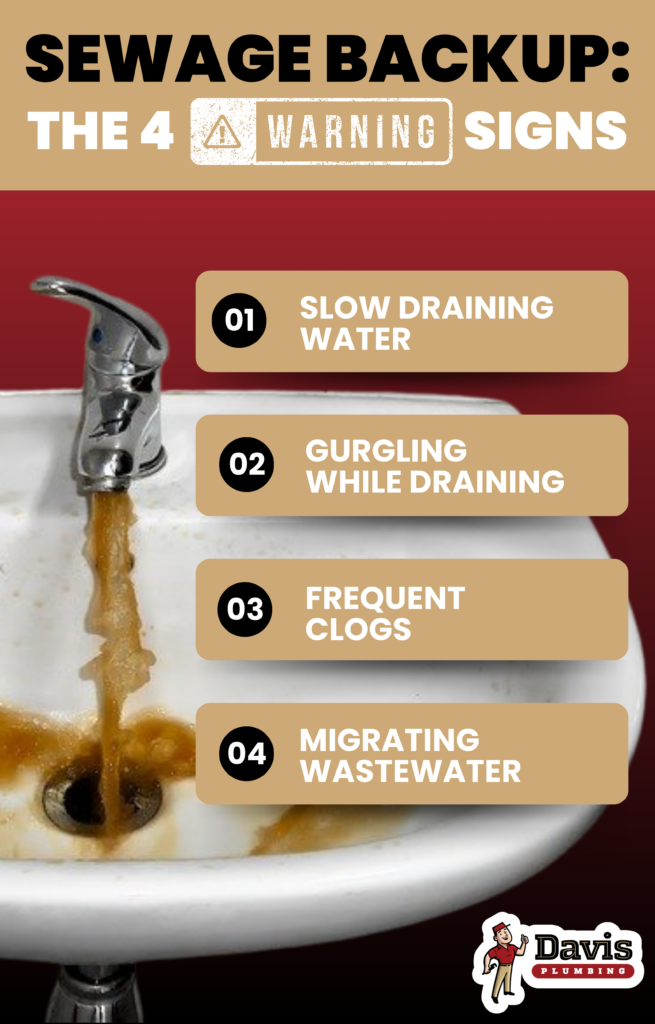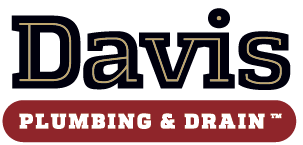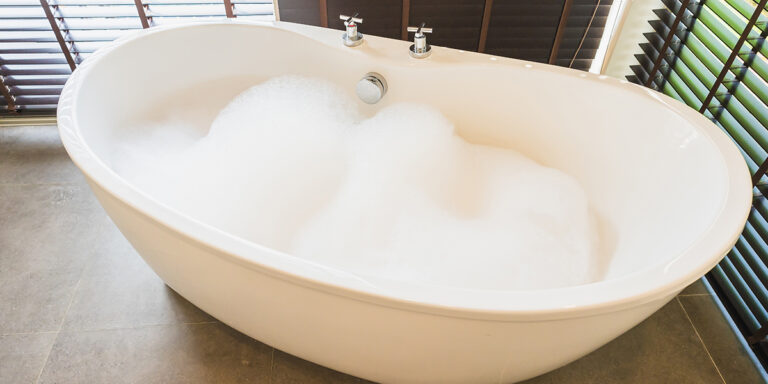Sewage backing up through your bathtub isn’t just unpleasant—it’s a serious health hazard. If you’re facing this issue in your New Jersey or Philadelphia home, it’s important to take immediate action. Here, we’ll explain why this happens, common causes, and the steps you should take to address the problem as quickly and effectively as possible.
Why Is Sewage Coming Up Through My Bathtub?
Sewage backing up through your bathtub typically happens when there’s a blockage or obstruction in your plumbing system. This prevents wastewater from flowing properly through the pipes and causes it to back up into the lowest point in the system—often your bathtub or shower drain. The most common potential causes include:
- Clogs in the Main Sewer Line: Debris or foreign objects may block the main sewer line, causing water to back up into lower drains, like the bathtub backing up or toilet backing up into tub. Items such as wipes or grease are often the cause, and if left untreated, they can lead to severe plumbing issues.
- Blocked Vent Pipes: Vent pipes help regulate air pressure in the plumbing system. When they get clogged, water may be forced back into your drains, resulting in sewage backing up through your bathtub. A blocked vent can create a vacuum effect, causing sewage backup in the shower or sewage coming out of the shower drain.
- Pipe Damage or Cracks: Cracked or damaged pipes restrict water flow, leading to water backing up in tub or other drains. Over time, pipes can become compromised due to age or shifting ground, resulting in potential blockages. Slow draining or gurgling sounds often signal these issues.
- Tree Roots: Tree roots searching for moisture can invade pipes and cause blockages, leading to aforementioned problems like the toilet backing up into the bathtub or sewage backup in tub. Roots can gradually grow into pipes, causing severe restrictions that require professional inspection to resolve.
For these issues, sewer line services are often required to identify and resolve the root cause effectively. A professional plumber will assess the situation and determine the underlying problem.
How Do You Get Rid of Sewer Backup in the Bathtub?
If sewage is coming up through your bathtub, immediate action is necessary. The following are important first steps to take:
- Turn Off Water and Avoid Using Drains: First, stop using any water in the house, including showers, sinks, and toilets. Using any water can worsen the backup and spread contaminants further through your plumbing system.
- Identify the Source of the Backup: Determine whether the problem is isolated to your bathtub or if other drains (like toilets or sinks) are also affected. If multiple drains are backing up, the issue likely lies in the main sewer line.
- Check for Visible Blockages: If you’re comfortable doing so, check the drain for visible blockages or debris. You can try using a plunger or a drain snake to clear minor clogs, but remember that more serious issues may require professional intervention.
- Call a Plumbing Professional: If the backup persists or you cannot clear it yourself, it’s time to call a professional plumber. They can provide drain cleaning services or use specialized tools, like hydro-jetting or a sewer camera inspection, to locate and clear the blockage.
Schedule a Sewer Inspection: After addressing the immediate problem, it’s a good idea to schedule a sewer line inspection. This can help identify any long-term issues, such as tree root intrusion or pipe damage before they cause further problems.

Frequently Asked Questions
Why Is Sewage Coming Up Through My Bathtub Instead of Another Drain?
Sewage typically backs up through the bathtub when it is the lowest point in your plumbing system. If multiple drains are affected, it may indicate a blockage in the main sewer line.
How to Unclog a Bathtub That Is Full of Water?
To unclog a bathtub full of water, use a plunger to loosen the blockage or a drain snake to remove debris. If the water doesn’t drain after these attempts, it’s best to contact a professional plumber.
Can I Fix a Clogged Sewer Line Myself?
While minor clogs can sometimes be addressed with a plunger or drain snake, most sewer line issues require professional expertise. Attempting to fix it yourself could cause more damage and higher repair costs later.
What Are the Warning Signs of a Sewer Line Problem?
Warning signs of sewer line issues include multiple drains, like your tub, backing up, persistent foul odors, or gurgling noises coming from your drains.
How Much Does It Cost to Fix a Clogged Sewer Line?
The cost to fix a clogged sewer line depends on the severity of the blockage and the method used to address it. For an accurate estimate, contact Davis Plumbing for an inspection. We offer financing options for our Cherry Hill, Camden, and Burlington neighbors, so you can address your plumbing concerns without breaking the bank.



